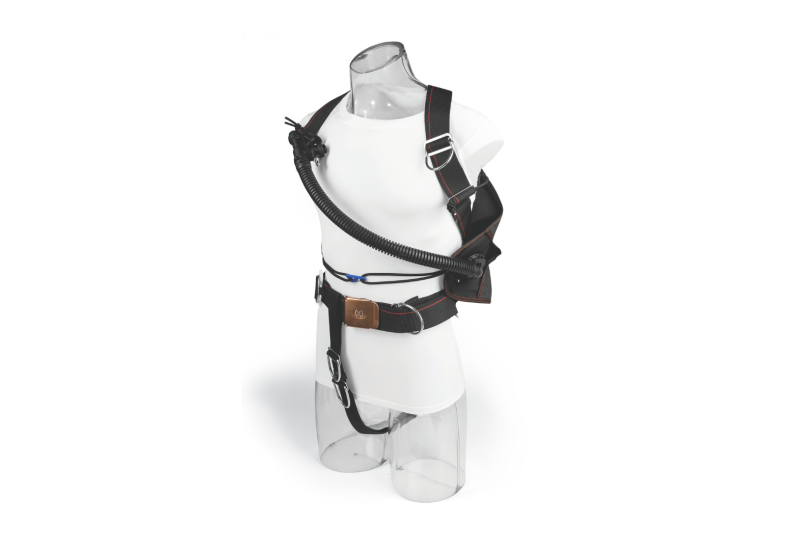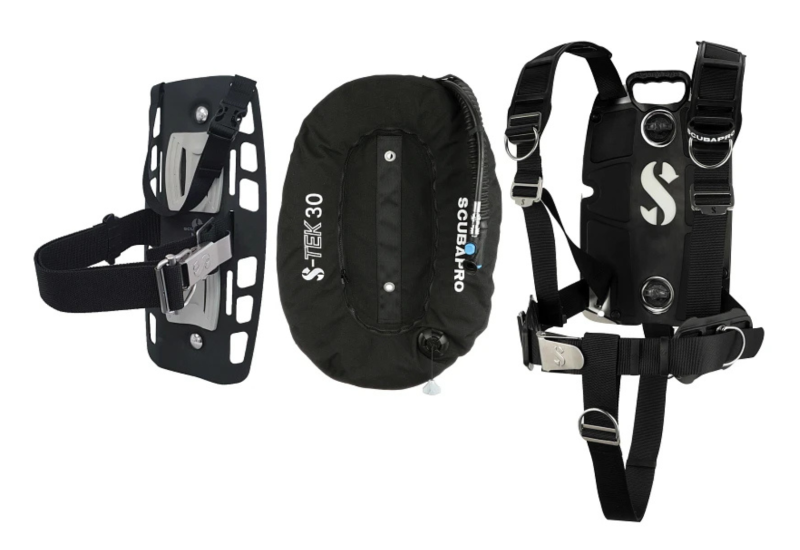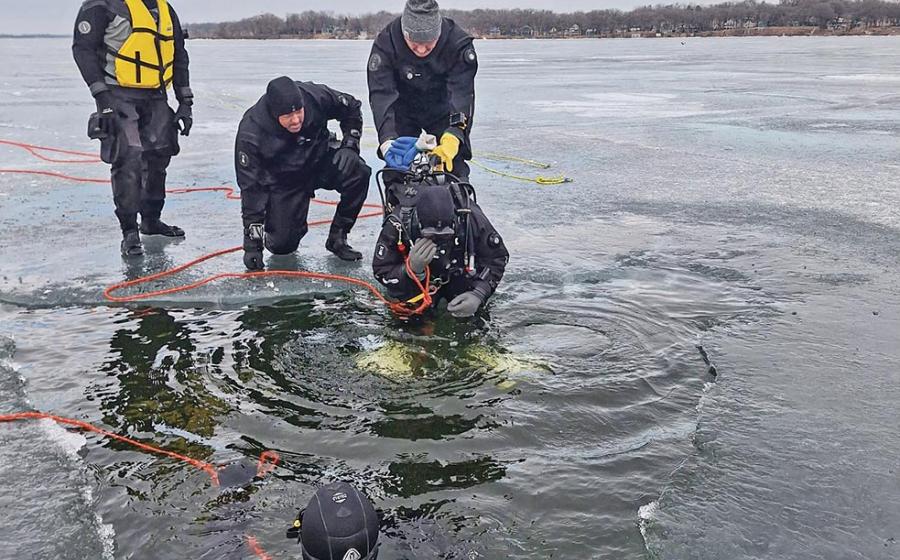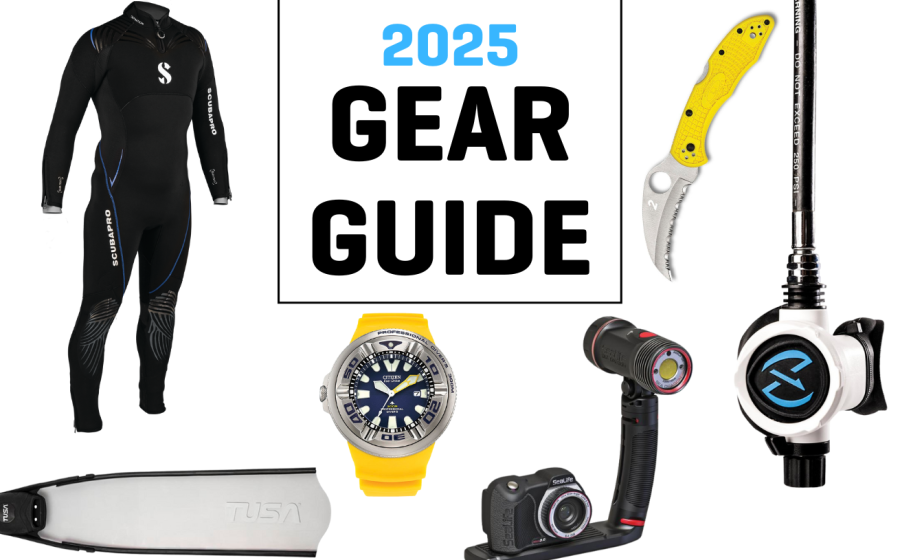ScubaLab: BCs
| June 2010 Issue Scuba Lab Review Quick Links |
|---|
| General-Purpose BCs |
| --- |
| While they can be used for any type of diving, general purpose BCs are designed primarily for temperate- and/or cold-water diving with 7mm wetsuits or drysuits. General Purpose BCs tend to offer lots of buoyant lift across their size ranges along with heavy-load integrated weight systems. They often have large cargo pockets and larger D-rings for attaching additional gear. |
| Aeris EX100| Aeris EX200 |
| Aqua Lung Pro QD| Aqua Lung Pro LT |
| IST J-1000 Alpha| IST J-1200 Hydro D |
| ScubaMax Versa 3000| SCUBAPRO Seahawk |
| SeaSoft Sealion| Sherwood Tortuga |
| Zeagle Tech 10| |
| Travel BCs |
| --- |
| Travel BCs are lighter and more compact than General Purpose BCs. Many are designed to fold or stow in handy storage pouches for easy globe-trotting. Travel BCs tend to offer less buoyant-lift capacity and smaller weight pouches to suit warm-water diving scenarios. |
| Aqua Lung Zuma| Cressi Aquapro 5 |
| SCUBAPRO Geo| SCUBAPRO Litehawk |
| SeaSoft Travlite| Zeagle Express/Deluxe |
| Women's BCs |
| --- |
| Women are shaped differently than men, so it makes sense that a women’s BC would be shaped differently too. Women’s BCs are often cut higher along the waist and are more expansive in the chest area. Straps and adjustments accommodate shorter, narrower torsos, and power inflators are ultracompact to fit comfortably into smaller hands. |
| BARE Curve| Sherwood Luna |
| Tusa Selene II| |
This year has turned out to be a banner one for BCs, and a busy year for ScubaLab. A sluggish economy apparently didn’t detract engineers from coming up with a bunch of entirely new BC designs, as well as some very cool improvements to existing models. We know this because, after sending out a call for gear to dive manufacturers, 20 new or upgraded BCs showed up on ScubaLab’s doorstep: 10 jacket-style, nine back buoyancy and one hybrid. With so many BCs to test and dive, it was clearly time to set down our coffee mugs and get busy. For 19 years, ScubaLab has been testing BCs based on a rigorous three-phase test regimen. First, each BC is unpacked and assembled, tested for fit and strapped to a tank. Everything from D-rings to pockets to padding is scrutinized, valves are exercised and integrated weights dry-tested for function. The BCs are then transferred to the test pool, where ScubaLab staffers measure inherent buoyancy and buoyant lift. This is followed by flow-rate tests on each BC’s valve system. Finally, a ScubaLab test team of six to eight divers and one test supervisor boards the Body Glove dive boat in Redondo Beach, California, and head out to a primo dive site, where each tester gets an opportunity to dive each BC and evaluate its real-world performance.
How and Why We Test
The goal of every ScubaLab gear review is to help you become savvier dive-gear consumers. Our reviews are impartial and based on both objective measurements of raw performance and the feedback of human test divers.
Inherent Buoyancy Tests
The Why: Every pound of inherent buoyancy a BC carries is an extra pound you must carry in your ballast system. When it comes to inherent buoyancy, less is always best. Inherent buoyancy has improved considerably over the years. These days 1 to 2 pounds of inherent buoyancy is average, less than a pound is exceptionally good, and no inherent buoyancy –– though uncommon –– is a real bonus. The How: In a pool, all air is squeezed out of the BC using all exhaust valves. The BC is rotated underwater and all areas of padding are kneaded to release any trapped air. Then, letting the BC hover in the water column, weights are added in 1- or 1-and-a-half-pound increments to achieve neutral buoyancy. Pound weights are used for ballast because they most closely relate to the actual experience of a diver, who adds pound weights to his ballast system to achieve neutral buoyancy.
Buoyant Lift Tests
The Why: If you’re a warm-water diver who wears minimal exposure protection and therefore needs little ballast weight, your BC’s buoyant lift will probably be of little concern. However, if you dive with a thick wetsuit or drysuit with substantial ballast requirements, it’s important to know that your BC’s buoyant-lift claims match reality. Based on the different methods used to measure buoyant lift, we consider a 10 percent variance between claimed and measured lift capacities to be reasonable, and up to a 20 percent variance not cause for much concern. Beyond that we feel manufacturers aren’t providing useful data to divers, who need accurate buoyant-lift figures to make sure the BC they choose actually meets their individual diving needs. The How: In a test pool, the BC is buckled around a neutrally buoyant bucket to simulate its shape when being worn by a diver. The BC is inflated until valves pop. Ballast is loaded into the bucket until the BC achieves neutral buoyancy, then added up and compared to the lift capacities listed by manufacturers.
Flow Rate Tests
The Why: ScubaLab tests flow rates to determine whether or not a BC’s deflation valves will stay ahead of the inflation valve to avoid an out-of-control ascent in the event the inflation valve sticks open. The How: In a heads-up ascent position, starting out with the BC totally empty and loaded with ballast equaling 20 percent of its manufacturer-stated buoyant lift, the inflation valve is simultaneously activated for 20 seconds with each applicable deflation valve, then the BC is checked to see if it is able to remain negatively buoyant. Industry standards require that at least one heads-up deflation method keep up with inflation. All BCs in this round-up have at least one, and many have up to three deflation methods that can keep up with inflation.
Ergo Tests
The Why: The best way to determine whether or not a BC is right for you is to dive it. If you can’t do that, the next best thing is for a team of experienced gear testers to dive it for you and report back with their findings. The How: Evaluations focus on BC features and functions that are most relevant to real-world diving. Test divers use a 1 to 5 rating system to score each area of performance. Scoring is done on underwater slates with specially prepared underwater sheets preprinted with the BC test protocol. An additional sheet is supplied to enable divers to expand on their scores with written comments. The ergo test protocol covers eight criteria, divided into three categories: Most Important, Moderately Important and Convenience Elements. Following are the criteria with a brief description of some of the issues test divers take into consideration: MOST IMPORTANT: ASCENT CONTROL -- During a normal ascent, is it easy to maintain buoyancy and control? Is it easy to bring a rapid ascent under control? ATTITUDE AND STABILITY -- Once in the water, does the BC provide the diver with a feeling of control? Is it easy to maintain a swimming attitude? Does the tank-strap system support the tank properly? Does the tank wobble at depth? Is the weight system designed to distribute ballast to avoid unwanted rolling or back-tipping? WEIGHT DITCHING -- During the dive, is it easy or difficult to ditch the weights? Are weight-pouch handles easy to access? Does the system feel secure? Do weight pouches have the potential to ditch themselves without warning? Is it easy or difficult to remove weights and pass them to a boat tender before exiting the water? MODERATELY IMPORTANT: VALVE OPERATION -- How easy is it to operate the inflator valve? Is the design intuitive? Does the valve fit easily in the hand? Is button action smooth or explosive? Is the pull-dump system effective? Are remote exhaust valves available, accessible and effective? Is the oral inflator convenient and comfortable to use? COMFORT AND ADJUSTMENT -- How does the BC fit both in and out of the water while attached to a tank? Is the BC a jumble of straps and buckles or is it easy to sort out? Are there enough vertical/horizontal adjustments to achieve a secure fit? Is the BC comfortable? Is there adequate padding? Is there lumbar support? CONVENIENCE ELEMENTS: ASSEMBLY -- How easy/difficult it is to attach the BC to a tank and attach hoses? Are there handles, valve positioning straps, etc. that make it easy to transport and position the BC on the tank? Are tank strap adjustments/buckles easy to figure out and operate? WEIGHT LOADING -- Before the dive, is it possible to load weight pouches into their sleeves while wearing the BC? Can loading be done single-handedly or is assistance required? Is the loading system complicated, confusing or intuitive? ATTACHMENTS AND POCKETS -- Both in the water and out, is it easy to access cargo pockets, including closing pockets, after use? Do pockets provide adequate volume? How easy is it to access and use hose clips, D-rings, etc.?
| June 2010 Issue Scuba Lab Review Quick Links |
|---|
| General-Purpose BCs |
| --- |
| While they can be used for any type of diving, general purpose BCs are designed primarily for temperate- and/or cold-water diving with 7mm wetsuits or drysuits. General Purpose BCs tend to offer lots of buoyant lift across their size ranges along with heavy-load integrated weight systems. They often have large cargo pockets and larger D-rings for attaching additional gear. |
| Aeris EX100| Aeris EX200 |
| Aqua Lung Pro QD| Aqua Lung Pro LT |
| IST J-1000 Alpha| IST J-1200 Hydro D |
| ScubaMax Versa 3000| SCUBAPRO Seahawk |
| SeaSoft Sealion| Sherwood Tortuga |
| Zeagle Tech 10| |
| Travel BCs |
| --- |
| Travel BCs are lighter and more compact than General Purpose BCs. Many are designed to fold or stow in handy storage pouches for easy globe-trotting. Travel BCs tend to offer less buoyant-lift capacity and smaller weight pouches to suit warm-water diving scenarios. |
| Aqua Lung Zuma| Cressi Aquapro 5 |
| SCUBAPRO Geo| SCUBAPRO Litehawk |
| SeaSoft Travlite| Zeagle Express/Deluxe |
| Women's BCs |
| --- |
| Women are shaped differently than men, so it makes sense that a women’s BC would be shaped differently too. Women’s BCs are often cut higher along the waist and are more expansive in the chest area. Straps and adjustments accommodate shorter, narrower torsos, and power inflators are ultracompact to fit comfortably into smaller hands. |
| BARE Curve| Sherwood Luna |
| Tusa Selene II| |
| June 2010 Issue Scuba Lab Review Quick Links |
|---|
| General-Purpose BCs |
| --- |
| While they can be used for any type of diving, general purpose BCs are designed primarily for temperate- and/or cold-water diving with 7mm wetsuits or drysuits. General Purpose BCs tend to offer lots of buoyant lift across their size ranges along with heavy-load integrated weight systems. They often have large cargo pockets and larger D-rings for attaching additional gear. |
| Aeris EX100| Aeris EX200 |
| Aqua Lung Pro QD| Aqua Lung Pro LT |
| IST J-1000 Alpha| IST J-1200 Hydro D |
| ScubaMax Versa 3000| SCUBAPRO Seahawk |
| SeaSoft Sealion| Sherwood Tortuga |
| Zeagle Tech 10| |
| Travel BCs |
| --- |
| Travel BCs are lighter and more compact than General Purpose BCs. Many are designed to fold or stow in handy storage pouches for easy globe-trotting. Travel BCs tend to offer less buoyant-lift capacity and smaller weight pouches to suit warm-water diving scenarios. |
| Aqua Lung Zuma| Cressi Aquapro 5 |
| SCUBAPRO Geo| SCUBAPRO Litehawk |
| SeaSoft Travlite| Zeagle Express/Deluxe |
| Women's BCs |
| --- |
| Women are shaped differently than men, so it makes sense that a women’s BC would be shaped differently too. Women’s BCs are often cut higher along the waist and are more expansive in the chest area. Straps and adjustments accommodate shorter, narrower torsos, and power inflators are ultracompact to fit comfortably into smaller hands. |
| BARE Curve| Sherwood Luna |
| Tusa Selene II| |
This year has turned out to be a banner one for BCs, and a busy year for ScubaLab. A sluggish economy apparently didn’t detract engineers from coming up with a bunch of entirely new BC designs, as well as some very cool improvements to existing models. We know this because, after sending out a call for gear to dive manufacturers, 20 new or upgraded BCs showed up on ScubaLab’s doorstep: 10 jacket-style, nine back buoyancy and one hybrid. With so many BCs to test and dive, it was clearly time to set down our coffee mugs and get busy. For 19 years, ScubaLab has been testing BCs based on a rigorous three-phase test regimen. First, each BC is unpacked and assembled, tested for fit and strapped to a tank. Everything from D-rings to pockets to padding is scrutinized, valves are exercised and integrated weights dry-tested for function. The BCs are then transferred to the test pool, where ScubaLab staffers measure inherent buoyancy and buoyant lift. This is followed by flow-rate tests on each BC’s valve system. Finally, a ScubaLab test team of six to eight divers and one test supervisor boards the Body Glove dive boat in Redondo Beach, California, and head out to a primo dive site, where each tester gets an opportunity to dive each BC and evaluate its real-world performance.
How and Why We Test
The goal of every ScubaLab gear review is to help you become savvier dive-gear consumers. Our reviews are impartial and based on both objective measurements of raw performance and the feedback of human test divers.
Inherent Buoyancy Tests
The Why: Every pound of inherent buoyancy a BC carries is an extra pound you must carry in your ballast system. When it comes to inherent buoyancy, less is always best. Inherent buoyancy has improved considerably over the years. These days 1 to 2 pounds of inherent buoyancy is average, less than a pound is exceptionally good, and no inherent buoyancy –– though uncommon –– is a real bonus. The How: In a pool, all air is squeezed out of the BC using all exhaust valves. The BC is rotated underwater and all areas of padding are kneaded to release any trapped air. Then, letting the BC hover in the water column, weights are added in 1- or 1-and-a-half-pound increments to achieve neutral buoyancy. Pound weights are used for ballast because they most closely relate to the actual experience of a diver, who adds pound weights to his ballast system to achieve neutral buoyancy.
Buoyant Lift Tests
The Why: If you’re a warm-water diver who wears minimal exposure protection and therefore needs little ballast weight, your BC’s buoyant lift will probably be of little concern. However, if you dive with a thick wetsuit or drysuit with substantial ballast requirements, it’s important to know that your BC’s buoyant-lift claims match reality. Based on the different methods used to measure buoyant lift, we consider a 10 percent variance between claimed and measured lift capacities to be reasonable, and up to a 20 percent variance not cause for much concern. Beyond that we feel manufacturers aren’t providing useful data to divers, who need accurate buoyant-lift figures to make sure the BC they choose actually meets their individual diving needs. The How: In a test pool, the BC is buckled around a neutrally buoyant bucket to simulate its shape when being worn by a diver. The BC is inflated until valves pop. Ballast is loaded into the bucket until the BC achieves neutral buoyancy, then added up and compared to the lift capacities listed by manufacturers.
Flow Rate Tests
The Why: ScubaLab tests flow rates to determine whether or not a BC’s deflation valves will stay ahead of the inflation valve to avoid an out-of-control ascent in the event the inflation valve sticks open. The How: In a heads-up ascent position, starting out with the BC totally empty and loaded with ballast equaling 20 percent of its manufacturer-stated buoyant lift, the inflation valve is simultaneously activated for 20 seconds with each applicable deflation valve, then the BC is checked to see if it is able to remain negatively buoyant. Industry standards require that at least one heads-up deflation method keep up with inflation. All BCs in this round-up have at least one, and many have up to three deflation methods that can keep up with inflation.
Ergo Tests
The Why: The best way to determine whether or not a BC is right for you is to dive it. If you can’t do that, the next best thing is for a team of experienced gear testers to dive it for you and report back with their findings. The How: Evaluations focus on BC features and functions that are most relevant to real-world diving. Test divers use a 1 to 5 rating system to score each area of performance. Scoring is done on underwater slates with specially prepared underwater sheets preprinted with the BC test protocol. An additional sheet is supplied to enable divers to expand on their scores with written comments. The ergo test protocol covers eight criteria, divided into three categories: Most Important, Moderately Important and Convenience Elements. Following are the criteria with a brief description of some of the issues test divers take into consideration: MOST IMPORTANT: ASCENT CONTROL -- During a normal ascent, is it easy to maintain buoyancy and control? Is it easy to bring a rapid ascent under control? ATTITUDE AND STABILITY -- Once in the water, does the BC provide the diver with a feeling of control? Is it easy to maintain a swimming attitude? Does the tank-strap system support the tank properly? Does the tank wobble at depth? Is the weight system designed to distribute ballast to avoid unwanted rolling or back-tipping? WEIGHT DITCHING -- During the dive, is it easy or difficult to ditch the weights? Are weight-pouch handles easy to access? Does the system feel secure? Do weight pouches have the potential to ditch themselves without warning? Is it easy or difficult to remove weights and pass them to a boat tender before exiting the water? MODERATELY IMPORTANT: VALVE OPERATION -- How easy is it to operate the inflator valve? Is the design intuitive? Does the valve fit easily in the hand? Is button action smooth or explosive? Is the pull-dump system effective? Are remote exhaust valves available, accessible and effective? Is the oral inflator convenient and comfortable to use? COMFORT AND ADJUSTMENT -- How does the BC fit both in and out of the water while attached to a tank? Is the BC a jumble of straps and buckles or is it easy to sort out? Are there enough vertical/horizontal adjustments to achieve a secure fit? Is the BC comfortable? Is there adequate padding? Is there lumbar support? CONVENIENCE ELEMENTS: ASSEMBLY -- How easy/difficult it is to attach the BC to a tank and attach hoses? Are there handles, valve positioning straps, etc. that make it easy to transport and position the BC on the tank? Are tank strap adjustments/buckles easy to figure out and operate? WEIGHT LOADING -- Before the dive, is it possible to load weight pouches into their sleeves while wearing the BC? Can loading be done single-handedly or is assistance required? Is the loading system complicated, confusing or intuitive? ATTACHMENTS AND POCKETS -- Both in the water and out, is it easy to access cargo pockets, including closing pockets, after use? Do pockets provide adequate volume? How easy is it to access and use hose clips, D-rings, etc.?
| June 2010 Issue Scuba Lab Review Quick Links |
|---|
| General-Purpose BCs |
| --- |
| While they can be used for any type of diving, general purpose BCs are designed primarily for temperate- and/or cold-water diving with 7mm wetsuits or drysuits. General Purpose BCs tend to offer lots of buoyant lift across their size ranges along with heavy-load integrated weight systems. They often have large cargo pockets and larger D-rings for attaching additional gear. |
| Aeris EX100| Aeris EX200 |
| Aqua Lung Pro QD| Aqua Lung Pro LT |
| IST J-1000 Alpha| IST J-1200 Hydro D |
| ScubaMax Versa 3000| SCUBAPRO Seahawk |
| SeaSoft Sealion| Sherwood Tortuga |
| Zeagle Tech 10| |
| Travel BCs |
| --- |
| Travel BCs are lighter and more compact than General Purpose BCs. Many are designed to fold or stow in handy storage pouches for easy globe-trotting. Travel BCs tend to offer less buoyant-lift capacity and smaller weight pouches to suit warm-water diving scenarios. |
| Aqua Lung Zuma| Cressi Aquapro 5 |
| SCUBAPRO Geo| SCUBAPRO Litehawk |
| SeaSoft Travlite| Zeagle Express/Deluxe |
| Women's BCs |
| --- |
| Women are shaped differently than men, so it makes sense that a women’s BC would be shaped differently too. Women’s BCs are often cut higher along the waist and are more expansive in the chest area. Straps and adjustments accommodate shorter, narrower torsos, and power inflators are ultracompact to fit comfortably into smaller hands. |
| BARE Curve| Sherwood Luna |
| Tusa Selene II| |










